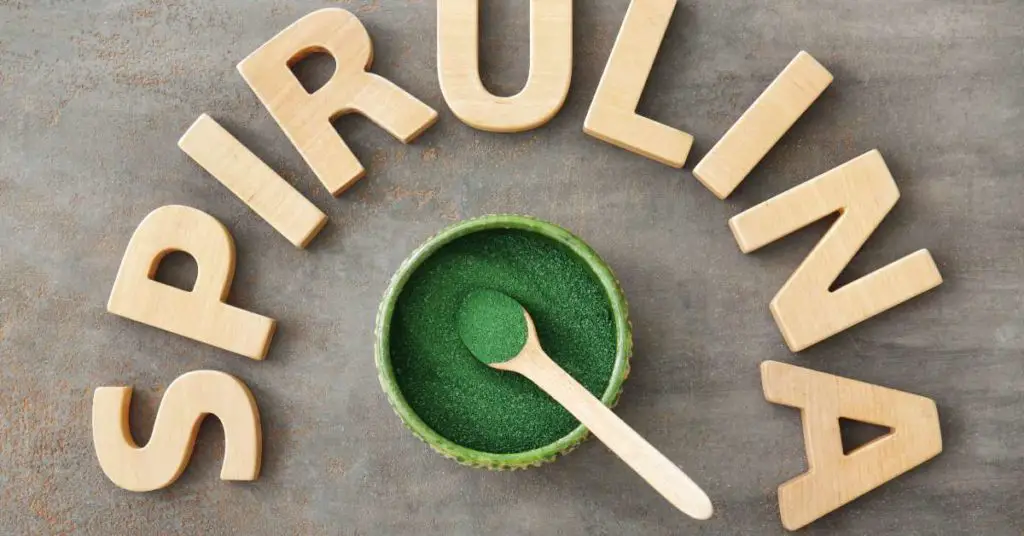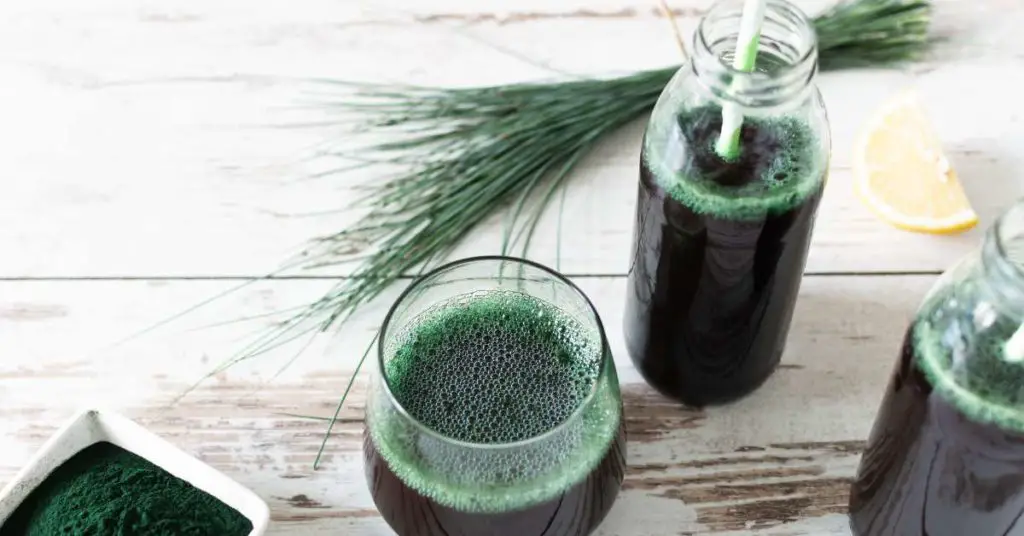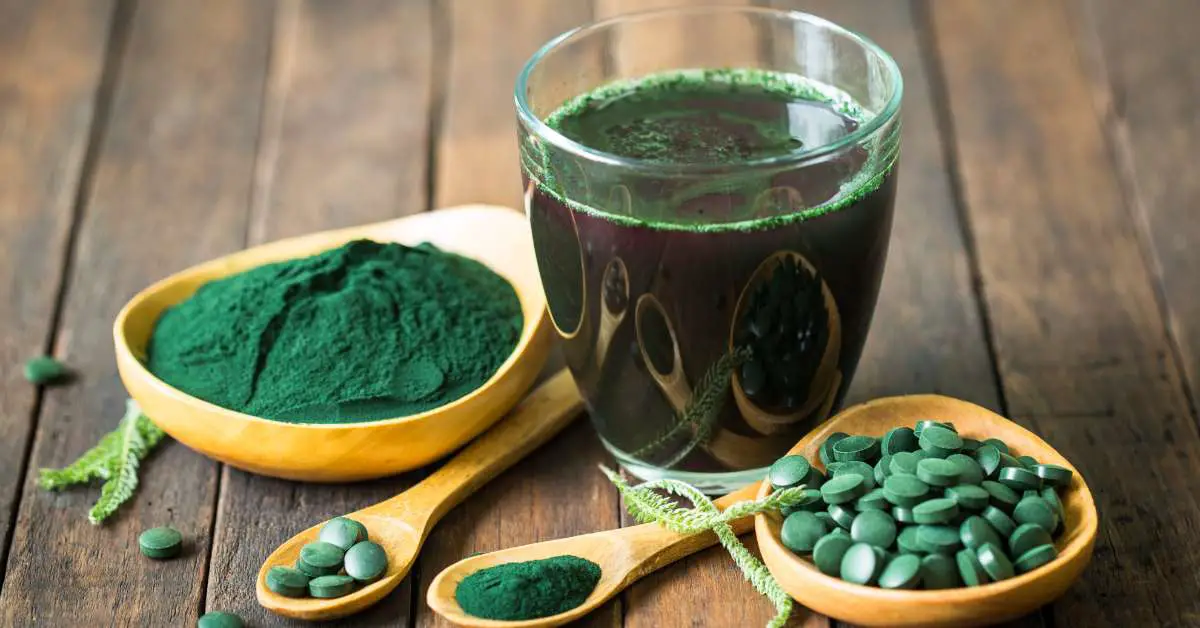Ah, spirulina—a vibrant blue-green superfood that has taken the health and wellness world by storm. With its impressive nutrient profile and potential health benefits, it’s no wonder some are turning to this microscopic alga for a nutritional boost.
But is spirulina low histamine? It’s a question you should ask if you have histamine intolerance and are trying to lower your body’s histamine burden. Let’s dive into the world of spirulina and explore whether it can be considered low histamine.
Histamine is a major player in your immune system, being a chemical released during allergic reactions, but it’s also a major signaling molecule. You need a certain amount of histamine for a healthy immune response, for your body’s inflammatory response, and to release gastric acid to digest your food. (5)
However, if you have histamine intolerance or sensitivity, consuming histamine-rich foods can trigger unpleasant symptoms. Spirulina, a nutrient-rich blue-green algae, has varying levels of histamine, which can be a concern if you have histamine-related issues.
What Is Spirulina?
Spirulina, a remarkable blue-green algae, is a powerhouse of nutrition and a popular superfood. This plant-based food is packed with goodness, being a powerhouse of protein, vitamins, minerals, and antioxidants.
It’s been getting serious attention in the wellness community for the health perks it could offer. Its vibrant green color and distinct spiral shape is a testament to its unique characteristics.
Spirulina grows in freshwater ponds and lakes and adapts well to warm climates. It also has a nutrient profile that’s nothing short of impressive. That’s why it’s in such high demand as a dietary supplement and ingredient in all sorts of health products.
Whether you sprinkle it as powder, pop it in tablets, or blend it into smoothies and recipes, spirulina is a nutrient-dense food. It’s a super easy and accessible way to up your nutrient game and give your well-being a boost.

The Histamine Content in Spirulina
Does spirulina contain histamine? Spirulina is not inherently high in histamine. However, the production process and the drying and storage methods manufacturers use to make spirulina products can impact its histamine content. If manufacturers don’t handle it properly, spirulina can be prone to histamine formation.
Plus, if you expose spirulina to heat, moisture, or store it improperly, histamine may accumulate. So, keep it cool, dry, and stored properly to avoid any unwanted histamine buildup.
To ensure low histamine spirulina, choose a trustworthy and trusted source that follows strict quality control measures. Look for manufacturers that prioritize proper cultivation, harvesting, and processing techniques to minimize histamine formation.
Third-party lab testing and certifications can also provide assurance of the product’s quality and safety.
The Effect of Spirulina on Histamine Levels and Allergies
Encouragingly, there’s evidence that low-histamine spirulina could help certain types of allergy symptoms. A study compared the efficacy of spirulina platensis and cetirizine in the treatment of allergic rhinitis. The experimental group received spirulina (2g/day), while the control group received cetirizine (10mg/day) for two months.
The results showed that spirulina was more effective than cetirizine in improving the cardinal symptoms of allergic rhinitis and could be an alternative treatment. (1)
While there’s no indication that you should take spirulina for allergies or histamine intolerance, it has potential for taming histamine. Other research shows it can block the release of histamine from mast cells. (3) The key is to buy spirulina manufactured and stored properly, so it retains its low histamine status.
Moreover, individual tolerance levels may vary when it comes to histamine-rich foods like spirulina. What might trigger histamine intolerance symptoms for you may not for someone else. Some of this may be due to other food sensitivities. Therefore, it’s essential to listen to your body and observe how it responds to spirulina consumption.

Other Health Benefits of Spirulina
Spirulina contains nutritional benefits. For one, it’s a rich source of plant-based protein. A teaspoon of spirulina contains 4 grams of high-quality plant-based protein. Plus, it’s a source of omega-3 and omega-6 fatty acids, B-vitamins, vitamin E, vitamin A, and even vitamin K. You get a healthy dose of minerals when you consume spirulina too. It contains potassium, magnesium calcium, selenium, zinc, iron, and copper. (2)
Another benefit of spirulina is that this food derived from algae has anti-inflammatory benefits. For health, you want a balanced immune system. It should react to foreign invaders, like bacteria and viruses, without overreacting. Spirulina supports immune system balance while taming inflammation.
Plus, spirulina contains compounds called carotenoids that protect the light-sensitive structure in the back of your eye, the retina, from damage due to sun exposure and aging. It’s also an abundant source of cell-protective antioxidants.
How to Get the Benefits of Spirulina
One way to get the benefits of spirulina is to take a spirulina supplement. As mentioned, you’ll need to ensure the supplement you take is quality and undergoes independent testing to ensure its purity.
Another option is to buy purified spirulina powder and mix it into smoothies and juices. Spirulina works best in smoothies that contain lots of low-histamine fruit, as it can taste grassy and a little bitter unless you offset it with natural sweetness.
Also, find out about histamines in seaweed.
Ensure the Quality and Purity of Spirulina Products
The histamine content of spirulina can vary depending on factors such as production methods and storage conditions. Choosing a high-quality spirulina from a reputable source and monitoring your individual tolerance can help ensure a positive experience.
Plus, there are concerns that spirulina could be contaminated with heavy metals, pesticides, and other toxins if harvested from the wrong lakes. (4) So, know what you’re buying and whether it undergoes independent testing. (4)
If you have concerns about histamine-related issues, seek guidance from a healthcare professional to tailor your dietary choices accordingly.
Conclusion
Is spirulina low histamine? Embrace the potential health benefits of spirulina, but remember to prioritize your well-being and listen to your body’s unique needs. With the right know-how and attention, spirulina can seamlessly fit into your eating routine while perfectly aligning with your health goals.
Explore the power of this fascinating blue-green superfood while keeping histamine-related concerns at bay but talk to your physician first. Also, find out more about the side effects of a low-histamine diet.
Key Takeaways:
- Spirulina, a popular superfood, may have varying levels of histamine, depending on how it’s manufactured.
- The histamine content of spirulina can be influenced by production methods and storage conditions, so it’s important to choose a reputable source that follows proper cultivation and processing techniques.
- Low-histamine spirulina may reduce mast cell histamine production and allergy symptoms.
- Listen to your body and watch how histamine-rich foods like spirulina affect you.
- Spirulina provides vitamins, minerals, plant-based protein, and omega-3 and omega-6 fatty acids..
- Only choose high-quality supplements or purchase purified spirulina powder to use in recipes. Talk to your physician before taking a supplement.
- Look for spirulina with independent purity testing to avoid heavy metal and toxin contamination.
- Consult a doctor about histamine-related diet changes, especially if you’re taking medications or have other health problems.
References:
1. Nourollahian M, Rasoulian B, Gafari A, Anoushiravani M, Jabari F, Bakhshaee M. Clinical comparison of the efficacy of spirulina platensis and cetirizine for treatment of allergic rhinitis. Acta Otorhinolaryngol Ital. 2020 Jun;40(3):224-229. doi: 10.14639/0392-100X-N0139. PMID: 32773785; PMCID: PMC7416373. Clinical comparison of the efficacy of spirulina platensis and cetirizine for treatment of allergic rhinitis – PubMed (nih.gov)
2. “10 Health Benefits of Spirulina.” 12 Oct. 2022, https://www.healthline.com/nutrition/10-proven-benefits-of-spirulina.
3. Karkos PD, Leong SC, Karkos CD, Sivaji N, Assimakopoulos DA. Spirulina in clinical practice: evidence-based human applications. Evid Based Complement Alternat Med. 2011;2011:531053. doi: 10.1093/ecam/nen058. Epub 2010 Oct 19. PMID: 18955364; PMCID: PMC3136577. Spirulina in clinical practice: evidence-based human applications – PubMed (nih.gov)
4. Grosshagauer S, Kraemer K, Somoza V. The True Value of Spirulina. J Agric Food Chem. 2020 Apr 8;68(14):4109-4115. doi: 10.1021/acs.jafc.9b08251. Epub 2020 Mar 25. PMID: 32133854. The True Value of Spirulina – PubMed (nih.gov)
5. Patel RH, Mohiuddin SS. Biochemistry, Histamine. [Updated 2023 May 1]. In: StatPearls [Internet]. Treasure Island (FL): StatPearls Publishing; 2023 Jan-. Available from: https://www.ncbi.nlm.nih.gov/books/NBK557790/


